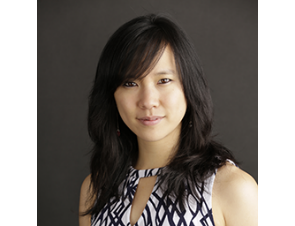 I approached dermatology residency like a Las Vegas buffet. Mesmerized by the wide variety, I dove in head first and filled my plate with everything in sight. My mentors were a bit bemused (or perhaps just exasperated) when at various points I seriously considered applying in pediatrics, procedural, and dermatopathology fellowships. Most residents have a diverse array of interests and talents, so perhaps I am not alone in having difficulty choosing a single path. Here are some strategies I would recommend for finding your niche and approaching your next career choice (or all-you-can-eat)!
I approached dermatology residency like a Las Vegas buffet. Mesmerized by the wide variety, I dove in head first and filled my plate with everything in sight. My mentors were a bit bemused (or perhaps just exasperated) when at various points I seriously considered applying in pediatrics, procedural, and dermatopathology fellowships. Most residents have a diverse array of interests and talents, so perhaps I am not alone in having difficulty choosing a single path. Here are some strategies I would recommend for finding your niche and approaching your next career choice (or all-you-can-eat)!
Sampler Platter: First Year of Dermatology Residency
Congratulations! You have been accepted into residency — the hardest part is over! Or is it? Don’t worry it is. The goal of first year is simply to get a lay of the land. Everything should and will sound foreign, so this is your time to get an overview of the diverse pathologies, treatments, and techniques within the field. Yes, one of the more challenging aspects of dermatology is the high volume from the amount of material to the packed clinic schedules. It helps, however, that you have been selected into residency because you are good at learning new things. Remember that you are well-equipped to handle academic and clinical rigors. Whatever your style, adapt what has worked for you in the past to excel in the tasks ahead. Plus, you are not alone. Embrace the rich array of resources at your disposal: your co-residents, attendings, and textbooks all roadmaps for your journey! There are countless excellent resources to study from; ask around for recommendations, then find a comprehensive text into which you can consolidate your own notes. Spend your first-year sampling whatever strikes your fancy expect it to be overwhelming at times, but realize that you have time to digest it all!
Time to Marinate: Second Year of Dermatology Residency
Second year is a time to marinate all the dermatologic knowledge you worked so hard to acquire your first year. This is the year to continue finessing your skills. Ask your surgery attending how to place those deep sutures, your dermatopathologist how to discern between similar histologic entities, your consult attending how to manage complex cases. Now that you have laid the groundwork, this is your year to solidify your connections from discussions with mentors that lead to unexpected collaborations to experiences with colleagues that lead to lifelong friendships. This is the year to attend conferences that focus on your various areas of interest. Engage in the academic process of presenting and writing. If your program allows, this is the time to coordinate electives that allow you to spend time with your role models. Second-year is your protected sandwich year to try on different hats and see what most suits your taste.
Ordering On (Or Off) The Menu: Third Year of Dermatology Residency
Third year is decision time, and the career decision is unlike any we have made before in our long training. For the first time, we get to decide everything academics or private practice, metropolitan cities or smaller towns, fellowship or no fellowship. Such a big choice can feel at once empowering and limiting. I have heard numerous pieces of helpful advice along the way, including: “Do some soul searching about what you REALLY want,” “Do work that feels like play,” and “Which of your mentors would you like to be in ten years?”
In the end, the choice is deeply personal. Dermatology has a vast array of opportunities, and as we search for our niche we get to learn unexpected things about ourselves. Ultimately there is no wrong decision we get to choose what fits our unique skillset the best! There are many tried and true paths, as well as new ways to forge our careers. And hey, if we don’t get it right the first time, we can always go back for seconds. I’ll be continuing my own search, and wish you luck in yours! Cheers!

